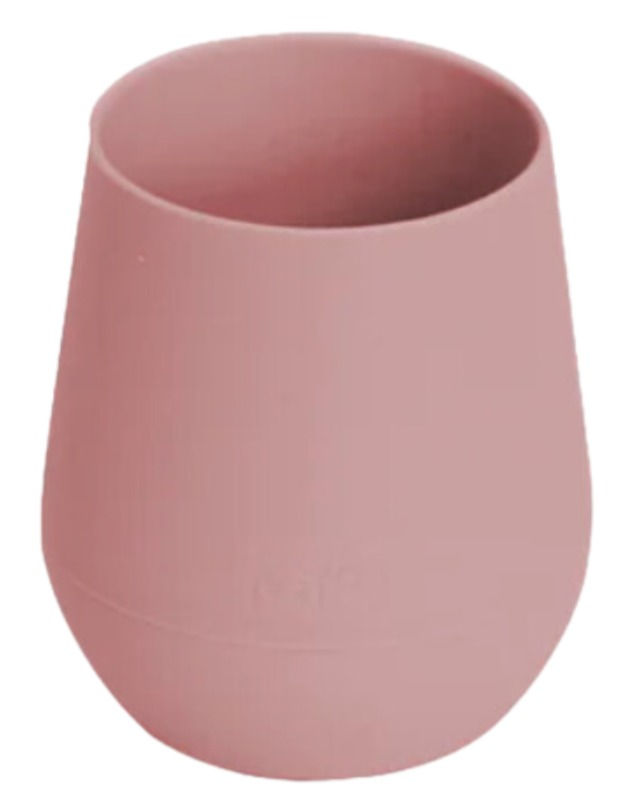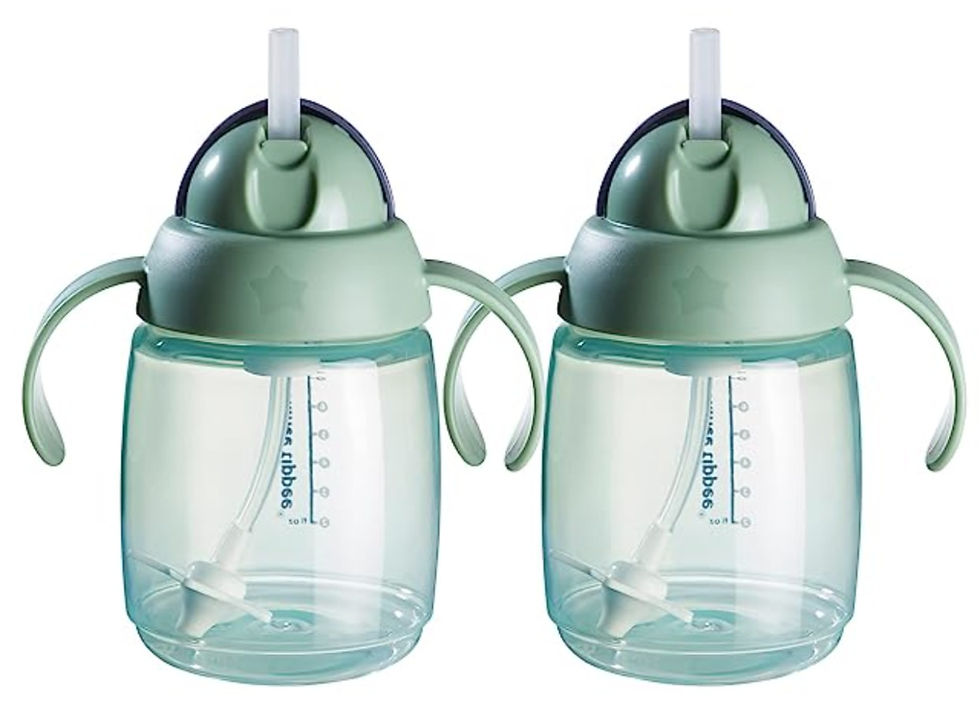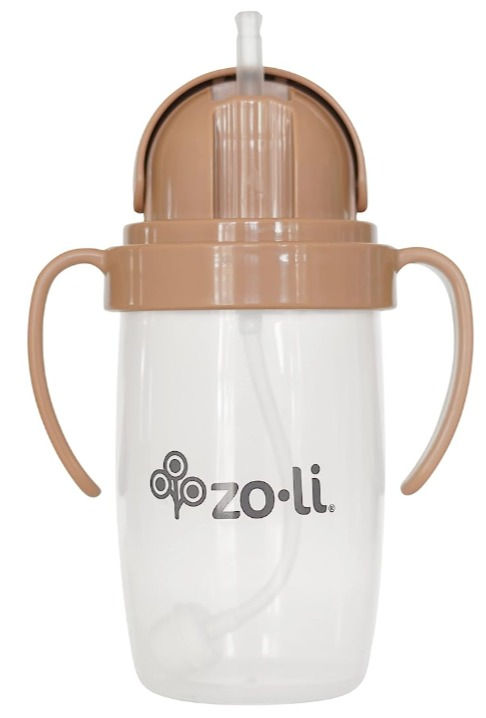Weaning your baby from the bottle and fully onto solid foods can be confusing, overwhelming, and full of many emotions! This blog post is here to help.
Disclaimer: This is not intended to provide direction on weaning from the breast. It may still be helpful and some principles may apply, but this is intended for bottle weaning. This blog post is not medical advice. Please ask your child’s doctor if you have questions about feeding your child.
WHY?

Up until 12 months of age, milk feeds (breastmilk or infant formula) have been the primary source of intake for your child, with solid foods complimenting milk feeds and giving your child practice and experience with food. After 12 months, everything shifts and we want to see FOOD becoming the primary source of intake, with milk feeds complimenting it. Toddlers who continue to fill up on bottles may not have adequate food and nutrient intake. Too much milk in the bottle can inhibit their appetite for solid foods. 12-24 months is a crucial time for children to develop a diverse food palate and a positive relationship with food. Relying too much on bottles during this time can interfere with those processes and potentially foster picky eating behaviors.
There is also a dental component to this issue. Prolonged bottle use increases the risk of dental cavities and dental issues. Prolonged use of bottles in toddlerhood can also delay speech development.
WHEN?
About 12 months of age is a great time to start working on bottle weaning. Your little one may still be getting ~4-6 bottles per day at that age. After they hit the one year mark, you may want to start the weaning process. It may take many months to complete the weaning process, so it helps to start early. The recommendation from the AAP (American Academy of Pediatrics) is to complete the bottle weaning process between 12-18 months.
WHAT MILK COMES AFTER FORMULA?
You probably know that babies no longer need infant formula after 12 months of age. So, what’s next? The most traditional weaning method is to switch to whole cow’s milk. But you really have three options:
1. Whole cow’s milk. This provides calcium, fat, protein, and vitamin D which are all important nutrients during this stage.
2. Plant-based milk. Cow’s milk may not be for everyone, and that’s ok. Plant-based milks can be a great option, but please know they are not all created equal. You want to look for a plant-based milk that offers a good amount of fat, protein, calcium, and vitamin D.
FYI: almond milk does NOT offer enough nutrients for toddlers. It does not have enough fat, protein, and overall calories. You can research different plant-based milks out there, but some that I do recommend are fortified oat milk, fortified soy milk, and fortified pea protein milk. Again, look for similar calorie and protein content to cow’s milk.
3. No milk – offer foods + water. After age 1 children don’t HAVE to have milk. It’s possible for them to get the nutrients they need through foods and be hydrated through water intake. If you choose this option, make sure you are offering a wide variety of foods with plenty of fat, protein, calcium, zinc, and vitamin D.
Doctors, family members, friends, or others may tell you that your little one MUST have cow’s milk, but that’s not true. Cow’s milk can be a really great option but there are other ways to meet your little one’s nutrient needs. It’s really up to you and your preferences, values, and goals with feeding.
HOW?
This is where it gets tricky because the process of bottle weaning can be different for each child. I have two children and the process of weaning for each of them was VERY different.
At 12 months, your child may still be getting 4-6 bottles/day. I’ve heard some professionals recommend a “cold turkey” approach and take the bottles away all at once, but I don’t love that method. That might work for some babies, but many babies will do better with a more gradual approach.
The end goal is no bottles, and offering 3 meals + 2 snacks to your little one each day. We can work up to this slowly.
Start with ONE bottle feeding and replace it with a snack. Perhaps your little one usually gets a bottle around 10:00 am, between their breakfast and lunch meals. You can start here and take away that bottle only, and instead put your baby in the highchair and offer a balanced snack (ideally try to include a fruit or vegetable, something with fat, and something with protein). You can give water with the snack in an open cup or straw cup. Give yourself and your baby a couple weeks to adjust to your new routine.
When you are ready, move onto the next bottle. Perhaps your little one gets a bottle first thing in the morning. You could remove that bottle feeding and offer breakfast as soon as they wake up. This might sound hard, but sometimes the first bottle of the day is actually the easiest because the child wakes up hungry and is very willing to eat solid foods. Try offering something quick and easy to prepare like overnight oats, yogurt, fruit, toast, etc. Give yourself and your baby a couple weeks to adjust to your new routine and then move onto the next bottle feeding.
One by one, follow this pattern until you are at 3 meals + 2 snacks/day. If you are at 3 meals + 2 snacks/day and still offering a bottle or two, no need to replace it with solid food, you can just remove that bottle feeding one at a time.
Wondering about the night time bottle?? For many parents this is the trickiest one to get rid of because the bottle often soothes the child to sleep and is a part of their bedtime routine. One great method here is to slowly change up your routine so that the bottle isn’t the last thing you do. For example, your routine may look something like this:
- Diaper and pajamas
- Read book
- Song
- Bottle
Try moving the bottle up so that it’s not the last thing:
- Diaper and pajamas
- Read book
- Bottle
- Song
Keep moving the bottle up and up so that your little one learns to fall asleep without it, and eventually you can take it away completely.
WHAT GOES IN THE BOTTLE?
After 12 months, there are lots of options. The most ideal situation is quickly weaning from the bottle and not needing to put cow’s milk or plant-based milk in a bottle. Milk can be offered with meals/snacks in an open cup or straw cup instead.
However, that isn’t always realistic, especially if you want to take a gradual approach to bottle weaning. It’s okay to put cow’s milk or plant-based milk in the bottle after 12 months.
Some babies will adjust from infant formula to cow’s milk EASILY with no issues! Others may resist the taste of the cow’s milk. It can help to warm the milk up first before putting in the bottle. Every kid is so different with this.
When weaning my oldest daughter Viola, she did not like the switch to cow’s milk. She drank a few sips and then wanted nothing to do with the cow’s milk. I tried warming it up, mixing it with formula, but she never seemed to love it. I tried putting it in a cup and a straw cup but she didn’t want that either. I kept offering it in the bottle and eventually I think she realized that it was her only option and she started to drink it from the bottle, but I could tell that she didn’t ever love it. If your child responds like this, no need to fear – Viola is now my biggest milk drinker and loves it!
Weaning my second child, Otto, was a completely different story. We warmed up some cow’s milk and put it in his bottle and he drank the whole thing, it seemed like he liked it more than the formula!
Both of these are normal. Every child is different and will respond to the change in milk differently.
Personally, I like offering cow’s milk in the bottle until we are completely done with bottle weaning, which for us has always been around 16 months. I think it allows for a smooth, gradual transition as both the TYPE of milk and the BOTTLE are not changed all at once. The bottle is a constant while the formula/breastmilk changes to cow’s milk or plant-based milk. And then the bottles are gradually dropped, one at a time. I think changing the type of milk and dropping the bottle all at once would be too drastic for these little ones (and for us).
HOW MUCH MILK? AND WHEN?
The AAP recommends no more than 16-24 ounces/day of cow’s milk for toddlers. However, many toddlers will be getting much much less than that. 24 ounces of milk is a LOT and may be replacing their intake of solid foods. Remember, the goal is for SOLIDS to be the primary source of intake after age 1, not milk. So, focus on food at mealtimes, not milk! It is a good idea to offer milk WITH one or two solid feedings (meal or snack), not by itself. Milk with every meal/snack is likely too much. Pick one or two to offer milk and then offer water at the rest of the meals/snack times. It is also a good idea to offer water throughout the day. There is not a minimum amount of milk that toddlers need to drink. The goal is to offer a variety of foods and balanced meals, so milk is just extra that is helping them to meet their unique nutrient needs. My 17 month old currently receives only 3-5 ounces of cow’s milk per day and I see no issues with that because he eats a good variety of foods, including other dairy items like cheese and yogurt.
RECAP:
- No need to keep using infant formula after 12 months of age
- Begin the weaning process around 12 months.
- Around 12 months, switch to cow’s milk or plant-based milk. (or slowly wean from the bottle completely if you don’t want to do either cow’s milk or plant-based milk.)
- Drop one bottle feeding at a time until your little one is receiving 3 meals + 2 snacks each day.
- As you are nearly done with bottle weaning, you might begin offering cow’s milk or plant-based milk in an open cup or straw cup at 1-2 mealtimes/day (offer with a meal, not by itself).
LINKS:
- Shop my favorite open cup. Use discount code 'Babies10'

- One of my favorite straw cups for 1-year olds (or younger):

- Another straw cup option:


Comentarios